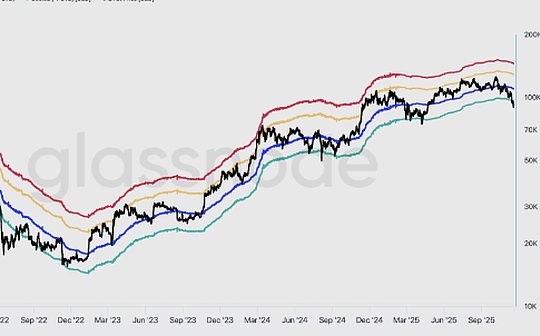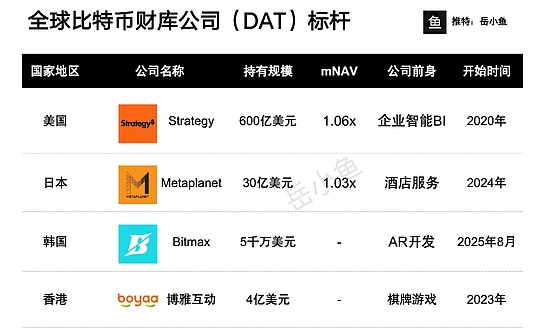
Original title:Bitcoin Euphoria Threatens to Break These ETFs
Author: Jack Pitcher, The Wall Street Journal; Compilation: 0xjs@jinsecaijignore
Investors flock to a pair of turbocharged ETFs to take advantage of Bitcoin’s momentum, but they contain hidden risks that are not yet widely understood.
These ETFs are designed to expand MicroStrategy’s daily returns, and the software company has turned itself into a Bitcoin buying machine.They use complex derivative bets to provide double the daily returns of stocks – whether up or down.
These ETF funds are managed by asset management companies Tuttle Capital Management and Defiance ETFs and are inherently risky.MicroStrategy itself is a leveraged bet on Bitcoin, holding about $35 billion in cryptocurrency.But bullish investors have pushed their market cap to nearly $90 billion, more than double the value of the Bitcoin it holds.Skeptics say this is unsustainable.
The Defiance Daily Target 2X Long MSTR ETF and the T-Rex 2X Long MSTR Daily Target ETF are designed for investors who want to bet on the stock more aggressively.The total assets of the two funds have expanded to about $5 billion since they were launched in August and September respectively..
Some analysts saidThese ETF funds have driven a sharp rise in MicroStrategy’s stock price.But they warned that if the stock fell 51% in a day, these ETFs could be completely destroyed, a crash similar to some of the 2018 market events (called “Volmageddon Doomsday”) that were linked to volatility.ETFs encounter situations.
Importantly, these two double-leveraged ETF funds (2X ETFs) have not worked as expected in recent days.MicroStrategy shares rose 9.9% on Wednesday, but T-Rex fund rose only 13.9% instead of the expected 19.8% target gain.The fund’s performance was just as disappointing as the stock fell.On Monday, the fund fell 6.2%.
This manifestation has caused strong dissatisfaction among investors on social media, who questioned the difference and said they felt cheated.
Jesse Schwartz, 36, a Washington state winemaker and day trader, has been using the funds as tools to expand his investment in the stock.
Schwartz was surprised to find that the stocks didn’t perform as advertised.Schwartz called his agent, Charles Schwartab, to ask about the reasons for the difference, but was not satisfied with the agent’s explanation.He sold all his shares over the weekend.
“It was disappointing to say the least,” Schwartz said.“I took the loss beyond all downside risks, but I did not get an upside reward.”
Since its first regulatory approval in 2022, niche fund managers have launched dozens of single-stock ETFs.So far, the performance of these funds is basically consistent with publicity.Popular funds designed to double the daily returns of Nvidia and Tesla tend to closely track their targets, thanks to their use of financial contracts known as total returns swaps.
Supporters of these funds say they allow average investors to access strategies that Wall Street has long used.Critics believe these funds can be dangerous because they do not offer diversified investments.In the case of MicroStrategy ETF funds, they increase leverage exposure to volatile stocks, these stocks are related to unpredictable cryptocurrencies.They warned that this hype is part of a general fanatic investor over speculative assets that will eventually collapse.

Managers of MicroStrategy ETF Funds said they may struggle to reach the 2x target because their top brokers—companies that offer securities lending and other services to professional investors—have reached the limit of swap exposure they are willing to offer.
Leveraged ETFs usually achieve their expected effects by using swaps, which are widely used in stocks with the largest scale and the most liquidity.Swap payments are directly linked to the performance of the underlying asset, allowing the fund to accurately double the daily performance of the stock or index.
Matt Tuttle, who manages Tuttle Capital and Rex Shares 2x long MicroStrategy funds, said he simply couldn’t get the swap amount needed for his thriving fund.He said his main broker offered him $20 million to $50 million swaps, which he could have used last week.
Tuttle and rival Defiance ETF CEO Sylvia Jablonski saidThey are turning to the options market to realize leveraged returns from MicroStrategy ETF funds.Traders can effectively use options to double the daily returns of assets, but analysts say it’s more like an inaccurate science.Option prices fluctuate, and big buyers like ETFs can drive the market.
Tuttle said the use of options is the main reason for the worsening of tracking.
On November 25, the Defiance ETF fell nearly three times that of the underlying stock.On Friday, the ETF fell 1.76%, while MicroStrategy fell just 0.35%.
Analysts saidThe launch of the leveraged MicroStrategy ETF has accelerated the trend of MicroStrategy’s stock price.To achieve leveraged results, ETFs must increase or decrease their exposure every day.Market makers networks that offer swaps and options often buy or sell actual MicroStrategy stocks to hedge their exposure.
“It’s like putting a lead block on your feet while driving. You can still control the throttle, but the default mode will be stomped to the bottom,” said Dave Nadig, a ETF industry veteran who worked at VettaFi and FactSet.








